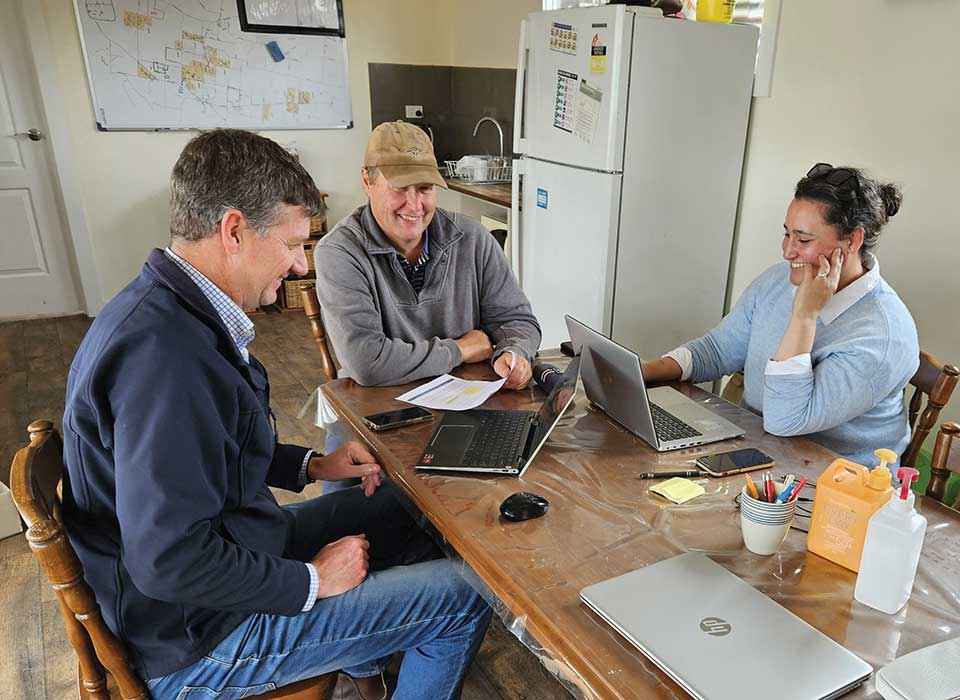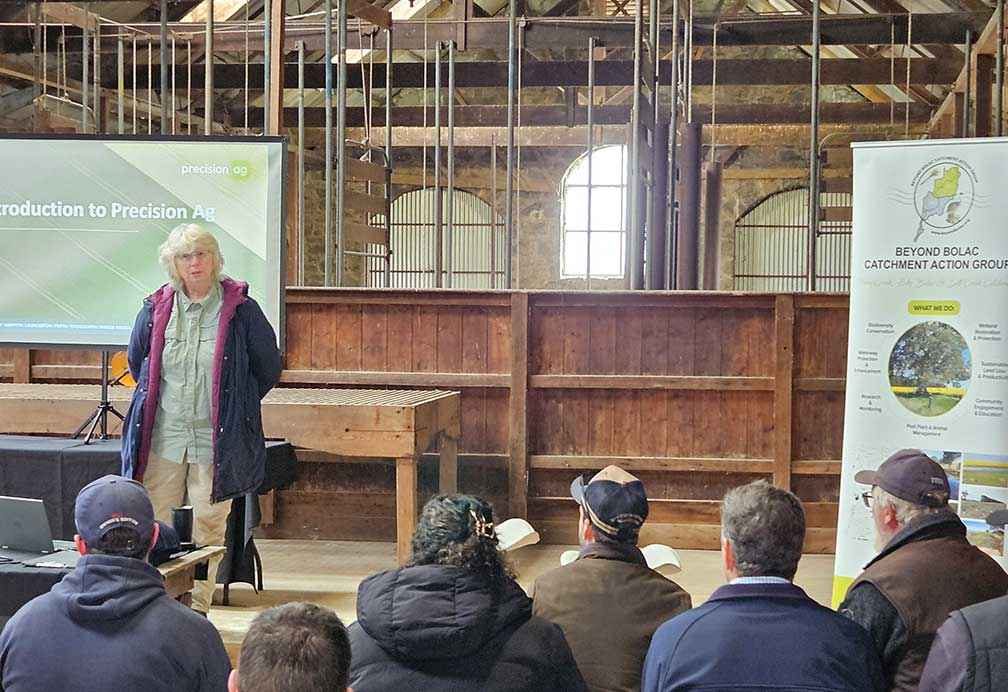Victorian Landcare Magazine - , Issue 89

In 2023, the Beyond Bolac Catchment Action Group (BBCAG) teamed up with its neighboring Landcare groups and networks, i.e. Panyyabyr Landcare Group, Upper Hopkins Land Management Group, and Upper Mount Emu Creek Landcare Network, on a landscape scale initiative to enhance productivity in the region without compromising valuable wetlands.
The joint project involved an on-farm trial to promote precision agriculture strategies among cropping farmers. The initiative was funded by the Glenelg Hopkins CMA through the Victorian Government’s Our Catchments, Our Communities program.
The trial took place in south west Victoria, a region known for high-rainfall cropping, variable soils, and temporary wetlands.
According to Tim Hill, Chair of BBCAG, the project came about because the region has the highest concentration of wetlands in Victoria.
“Many of these biodiverse, temporary wetlands are at risk due to drainage and cropping activities and we need to improve our conservation efforts,” Tim said.
Four experienced cropping farmers from Skipton, Lake Bolac, Nerrin Nerrin, and Minninera volunteered to participate in the trial and undertake a personalised precision agriculture journey.
Four experienced cropping farmers from Skipton, Lake Bolac, Nerrin Nerrin, and Minninera volunteered to participate in the trial and undertake a personalised precision agriculture journey. Simon Gabb, trial participant from Skipton, got involved with the trial to help create more awareness and education around the value of precision agriculture.
“I want to try to integrate precision agriculture to better manage our natural capital assets, such as swamps,” Simon said.
The first step was to understand the variability of surface soils and involved a grid soil sampling program, which enabled a deeper understanding of the nutrient levels of the topsoil of the project paddocks excluding the wetlands. Two participants mapped their soil variability through an EM38 (electromagnetic) soil survey as the first step to investigating potential sub-soil constraints.
Nutrient maps were produced and used to create base maps from which most variable rate applications were informed, such as variable rate lime, gypsum, monoammonium phosphate or potash.

Above: Dr Michelle Casanova discussing why wetlands are important in the landscape at the precision agriculture field day at Lake Bolac in June 2024.
According to Meera Cameron, from Precision Ag Pty Ltd, this methodology allows for the strategic placement of product at an appropriate rate.
“This reduces the potential run-off into waterways and application in wetlands,” Meera said.
The trial was very successful in engaging the cropping community. Linking wetland conservation with improving crop yields was an innovative approach. Providing a financial incentive that covered some of the initial costs was critical for getting participants involved.
The participating farmers gained valuable knowledge on the value of seasonal herbaceous wetlands in the landscape. These wetlands provide habitat, replenish groundwater, provide drought refuge for biodiversity and stock watering, improve water quality and mitigate floods. They also learnt how variable rate technology can enhance crop yields while conserving wetlands.
More than 40 people attended a field day held in June 2024 to share insights from the trial with the wider cropping community. Case studies have also been produced for each participant detailing their precision agriculture journey, and a series of short videos have been created to inspire others to consider adopting this approach.
The biggest challenge for this project was the limited timeframe for its delivery, due to funding requirements that didn’t align with the harvest period in summer. Additional funding is now being sought to continue monitoring yield outcomes in the upcoming season and assess the long-term impact of precision agriculture strategies on crop productivity while preserving wetlands.
Jileena Cole is the Landcare Facilitator for BBCAG. Jileena’s position is funded through the Victorian Landcare Facilitator Program. For more information about the trial, including case studies for each landholder, visit www.beyondbolac.org or email beyondbolac@outlook.com